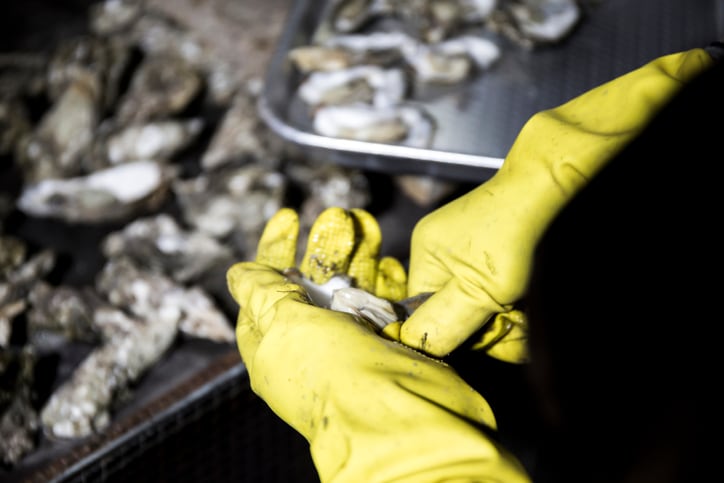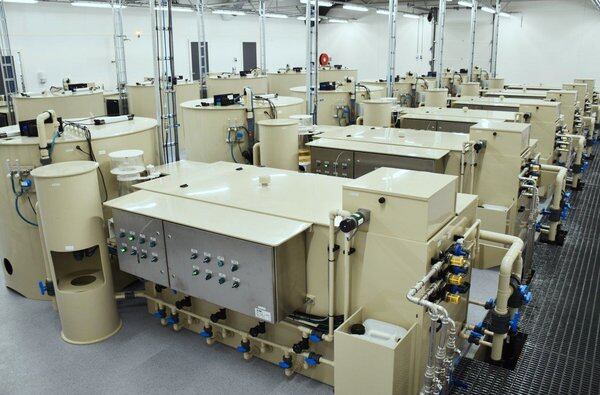Instead of freshwater, saline aquaponics utilises “abundant saltwater resources” to raise fish and grow crops.
This system could be an alternative to freshwater aquaponics or conventional farming, which have faced challenges such as soil salinity in dry regions.
“As freshwater resources have become increasingly limited worldwide, the abundance of saline water has made saltwater aquaponics an attractive solution. It is worth noting that only 2.5% of the worlds water is fresh, with the remaining 96.5% found in the oceans and seas,” the study noted.”
Researchers from United Arab Emirates University investigated the integrated aqua-vegeculture (iAVs) system, a method that employs sand for filtration, biofiltration, and crop cultivation.
These iAVs help in coastal, arid, or drought-prone areas where freshwater is limited.
With issues such as drought intensified by climate change, iAVs offer a more climate-adaptive option.
“This approach could transform food production in coastal regions and arid nations, addressing food security and water scarcity issues while alleviating the pressure on freshwater sources.”
According to the study, the growing demand for seafood in the Middle East, where awareness of seafood’s health benefits have increased, have led to more use of saltwater aquaponic systems to cultivate highly salt-tolerant plants and seafood.
Lettuce more sensitive to salinity
To assess the effectiveness of iAVs for food production, the study looked at the impact of salinity on lettuce and tilapia.
Under varying salinity levels, lettuce was significantly impacted.
The experiments showed that lettuce growth was optimal in freshwater.
While it was viable in 2.5% salinity and 5% salinity water, growth declined significantly at 7.5%.
“Higher salinity negatively affected various growth parameters, including the overall plant length, shoot and root lengths, and weight distribution. Decreased shoot and root lengths, coupled with reduced shoot weight, may indicate challenges in water and nutrient uptake, leading to compromised plant development.”
Excessive salinity was also shown to negatively impact the overall nutritional value of lettuce.
With a proximate composition analysis, it was determined that lettuce moisture, protein, fat, fibre, ash, and chlorophyll content generally declined as salinity increased.
“As salinity increases, lettuce may allocate fewer resources to protein and fat synthesis, affecting the nutritional quality of the harvested leaves.”
Furthermore, essential macro-minerals such as calcium, potassium, magnesium, phosphorus, and sulfur, also showed the same patterns.
At the same time, sodium levels increased significantly.
The study highlighted that 2.5% saltwater “minimally affects mineral composition” of lettuce compared to higher salinity water.
At this level, it also did not affect yeild or quality of the lettuce.
Tilapia exhibit adaptability
Tilapia are known for their adaptability and “capacity to reach marketable sizes in aquatic systems,” the study noted.
“The ability of tilapia to adapt to different salinity levels makes them a suitable candidate for aquaculture in brackish and seawater environments,” the researchers added.
As expected, the tilapia demonstrated high survival rates across all salinity levels.
“Fish showed 90% survival across all groups, with higher salinity potentially improving the farming efficiency.”
Growth was not negatively impacted, there was no statistically significant differences in final lengths across water treatments.
However, final weights and weight gains were slightly higher in the freshwater group as well as 2.5% salinity when compared in the 7.5% salinity group.
The experiment also showed that when tilapia are exposed to different salinity levels, the undergo physiological adaptations that allow them to survive and function in saltwater.
For instance, they developed specialised chloride cells in their gills and opercular membrane, which help them to manage the higher salt load.
The researchers noted that the economic viability of seawater tilapia cultivation has remained “largely unexplored”.
It said: “… cost-effective practices can be implemented with appropriate management. Agricultural researchers and planners are increasingly interested in utilising diluted seawater for crop irrigation.”
It concluded: “The collective findings emphasise the need for a careful and balanced approach to managing salinity levels in iAVs. Although moderate salinity may enhance fish farming efficiency, it poses challenges for optimal lettuce cultivation, thus impacting nutritional outcomes.”
Source: Animals 2025
Integrating Desert Sand Utilization in Saltwater Aqua-Vegeculture Production: Performance Evaluation of Yield and Biochemical Composition
Authors: Radhakrishnan Subramanian, Chythra Somanathan Nair, Ramya Manoharan, Drishya Nishanth, and Abdul Jaleel.





